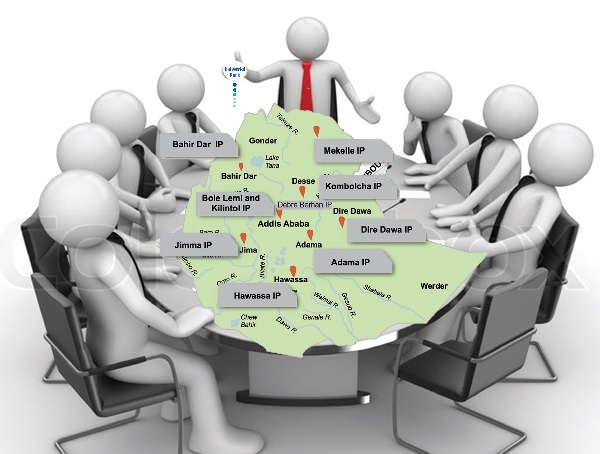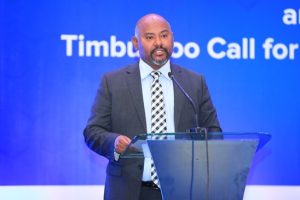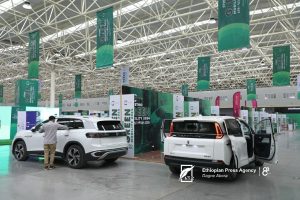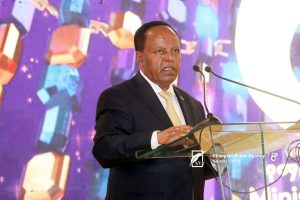
Ethiopia, in what could be described as a continuation of aggressive investment, has recently unveiled a further plan to construct new industrial parks. And economists urge the government to place more weight on the strategic importance and economic dividends of the capital-intensive investments beyond distribution patterns.
The country has already built state-of-the-arts industrial parks in its different parts, and yet the Industrial Parks Development Corporation plans to increase the parks’ number to 30 in the next two years. The last few years have seen a string of inaugurations of mega industrial parks in the country which include the iconic Hawassa Industrial Park.
The operational parks have already launched exports and begun generating the much needed foreign currency to the country. But some have been questioning if such investments have met the intended goals.
Dr. Ermias Ashagere is an Assistant Professor of Economics at Bahir Dar University. He says Industrial park is a new trend in the country. It is good that industrial parks are built since they can create massive jobs. However, the fact that the basic infrastructure remaining poor with the economy yet to be transformed, will be posing a challenge to the attainment of the goal. The private sector is after short-term business activities and service sector.
“We are putting the cart before the horse. The government needs to first help the private sector get more financial and technological efficiencies.” Most of the companies already operating in the parks import inputs from other countries. And this makes their business difficult. You cannot lean on importing inputs and exporting products.
Before opening up industrial parks, the government should first build the required infrastructures such as electricity, water, and telecom services besides creating market opportunities and stabilizing the macroeconomy, he adds. It is clear that East Asian countries such as Taiwan, Malaysia, or China have experiences worth sharing with extensive use of industrial parks or SEZs to attract foreign investment and push their industrialization, he adds.
“Industrial parks are not for political purposes or equity, they are meant for economic values. These capital-intensive investments should be viewed from their economic significance that they would bring to the country. Industrial parks are meant to attract labor and capital-intensive domestic and foreign investments and establish links to global markets by supplying quality products, eventually bringing economic transformation. Hence, the question is: Are these objectives being realized or not?
Recently, Prime Minister Dr. Abiy Ahmed said that the construction of industrial parks should be carried out in consideration of economic returns and the nation’s industrialization policy, signaling that due care will be attached in determining the location and status of industrial parks in line with their strategic importance, not distributions patterns.
Corporation CEO Lelise Neme says, in a Workshop on August 8, 2019, that the operational industrial parks were built along the corridor of Ethiopia-Djibouti railway route. “We’ve planned to construct additional industrial parks and a study is underway to identify sites,” she added.
Indicating that Ethiopia is working to be a light manufacturing hub, Lelise states that remarkable achievements have been registered despite the challenges which include political unrest in some parts of the country. The Corporation is partnering with pertinent bodies to ensure the safety of the operational industrial parks and make them favorable to investors, she remarks.
For his part, Corporation Deputy Chief Executive Officer Shiferaw Solomon states the government is planning to change course in its approach to industrial park’s development. There is a plan to create 100,000 jobs and effectuate structural economic change. The focus will be on fostering the aspiration to become hub of light manufacturing industries. Still, the country has immense potential for pulling more investment into the industrial parks which include productive population, high incentives, and big consumer.
The construction of industrial parks needs to consider the economic corridors, road accessibility, labor availability, and others. Industrial parks should have the required electricity, telecom, and other infrastructural facilities. By improving IPs management and organizational structure, the corporation plans to increase manufacturing’s share in the GDP, Shiferaw notes.
Comparing the rising population and land resource, the number of industrial parks is very few. Park development brings lots of blessings to the country. It bolsters industrialization, urbanization and job creations.
The industry sector is not competitive. It is highly reliant on imported inputs. “We ought not to compromise efficiency over equity. We need to stick to a universal approach. Industry parks are not about fairness, they about efficiency. Industrial parks must be located where there are road networks and better infrastructural facilities, Teshome Adugna, Assistant Professor of Economics tells The Ethiopian Herald.
“It is time to revise the way we have been doing business. Building industrial parks and increasing productivity are a different kettle of fish. We need to first increase agricultural products so that the agro-processing and manufacturing sectors have the required inputs,” Tesome adds. To him, generating more power is also another pressing task awaiting the country; parks should be supplied with the required amount of power.
One of the major constraints facing industrial parks is power shortage. For instance, over 1,700 MW is needed for industrial parks and the operational industrial parks require 306 MW of power, however, less than 170 MW is being supplied. This is far from the demand which the economists say the country must work to increase its power generation capacity.
The Ethiopian Herald, August 16/2019
BY DESTA GEBREHIWOT





